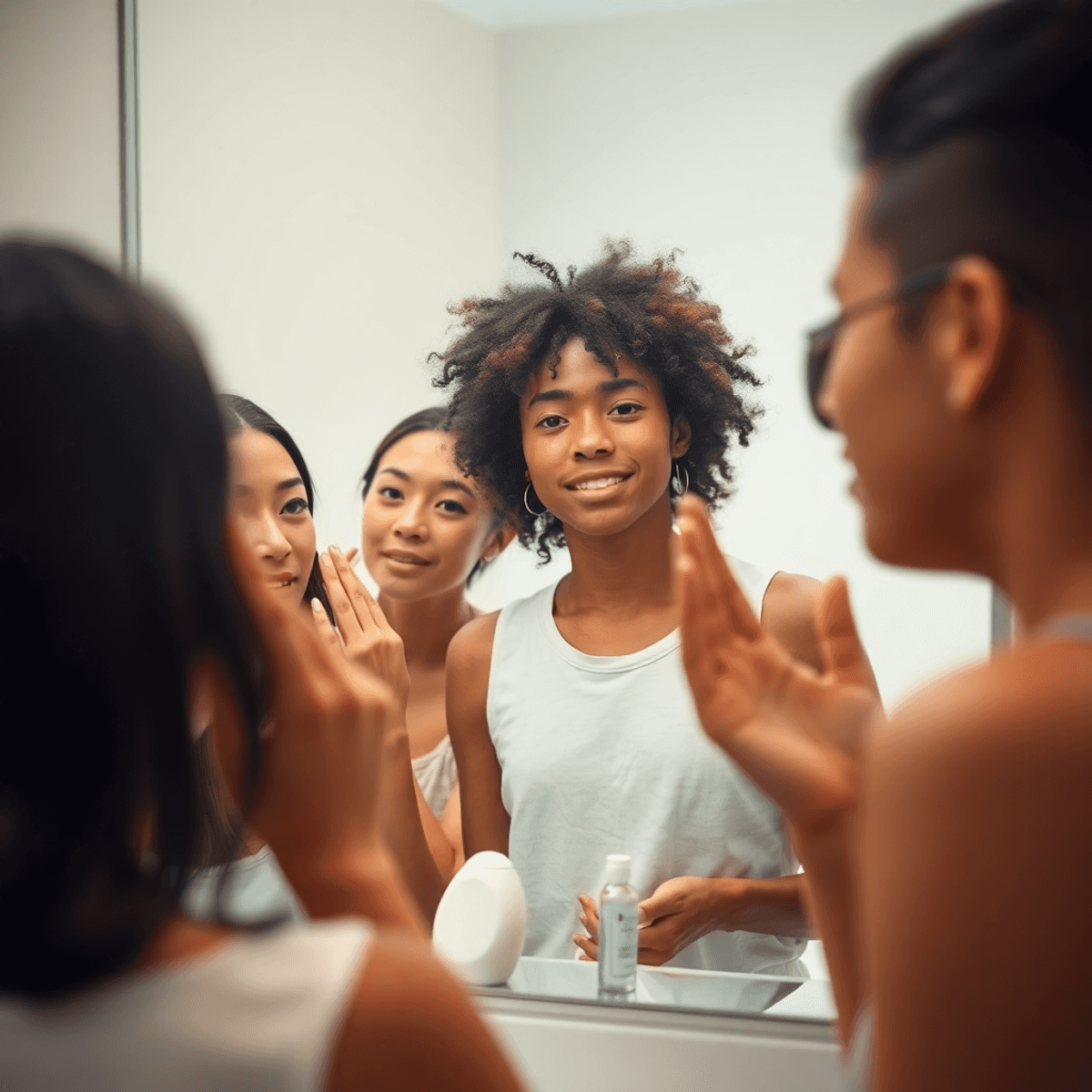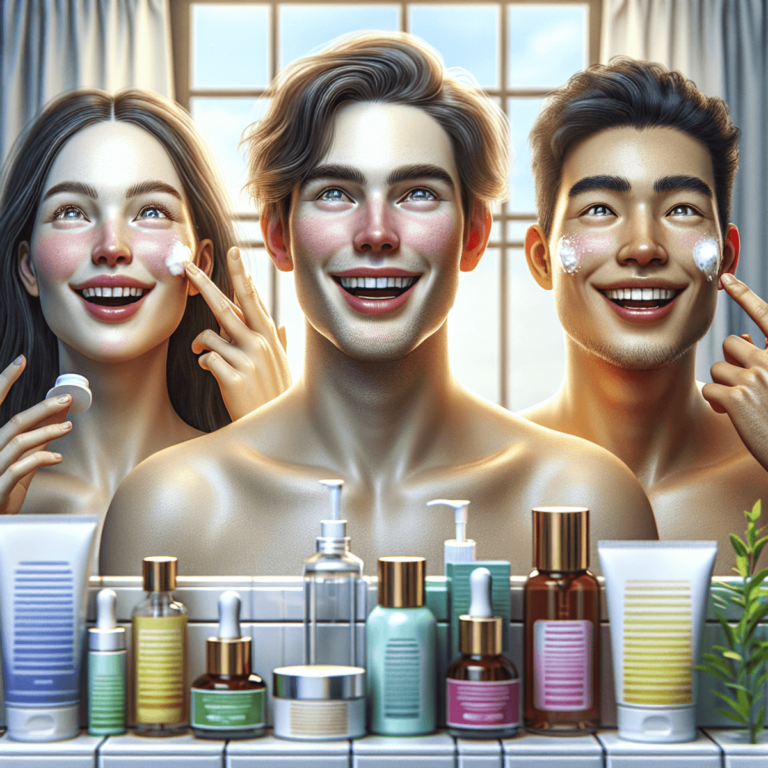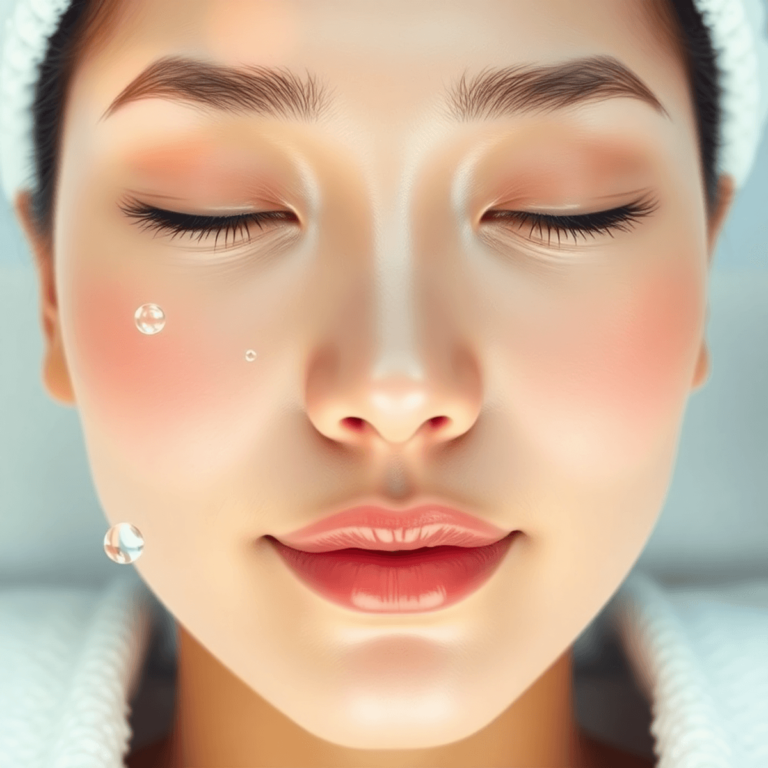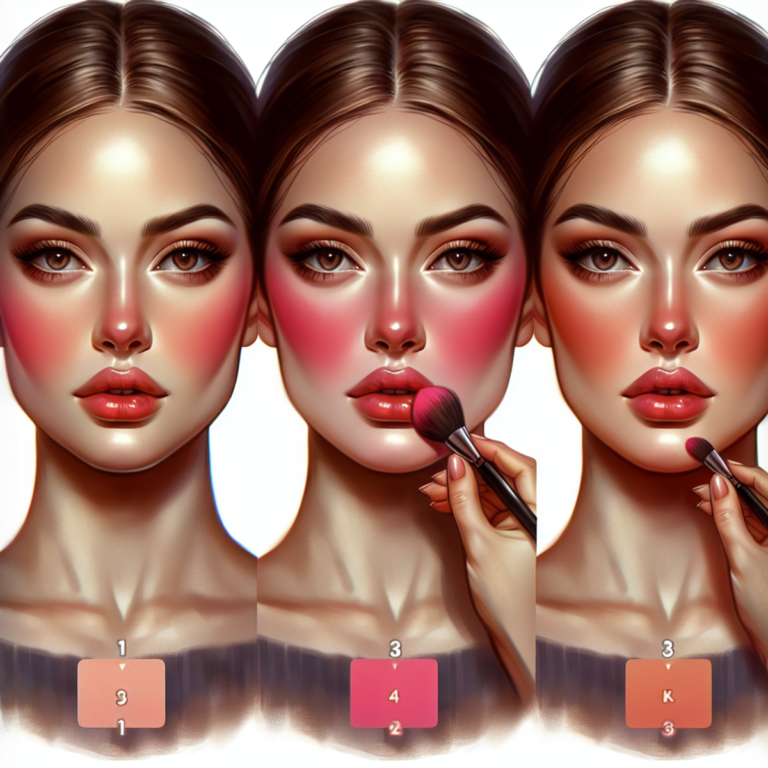How to treat pimples

Introduction
Dealing with pimples goes beyond skin-deep concerns. These persistent bumps and blemishes affect millions worldwide, often leaving a significant impact on self-esteem and confidence. Whether you’re battling stubborn forehead bumps, tiny facial imperfections, or frustrating acne scars, the struggle is real.
You’re not alone in this journey. Research shows that 85% of people experience acne at some point in their lives, making it one of the most common skin conditions globally. The emotional toll can be substantial:
- Reduced social interactions
- Decreased professional confidence
- Heightened anxiety about appearance
- Negative self-image
This comprehensive guide will equip you with proven strategies to treat pimples effectively. From tackling those small bumps on your face to preventing future breakouts, you’ll discover practical solutions backed by dermatological expertise. We’ll explore both quick fixes and long-term treatments, helping you achieve the clear, healthy skin you deserve.
Let’s transform your skincare journey with targeted approaches that actually work.
Understanding Pimples
Pimples come in different forms, and each type requires a specific treatment approach. Let’s take a closer look at the main types you might encounter:
1. Blackheads
- Open comedones with dark, oxidized surfaces
- Appear flat against the skin
- Common on nose, chin, and forehead areas
2. Whiteheads
- Closed comedones with white or flesh-colored bumps
- Trapped oil and bacteria beneath the skin surface
- Often found in clusters around the T-zone
3. Pustules
- Red, inflamed bumps filled with white or yellowish pus
- Tender to touch
- Can appear anywhere on face, chest, or back
4. Papules
- Small, red, raised bumps without pus
- Often feel hard when touched
- Signal the beginning of inflammatory acne
5. Cysts
- Large, painful bumps deep under the skin
- Filled with pus and other fluids
- High risk of scarring if not properly treated
The development of these pimples is caused by several key factors:
Primary Causes:
- Excess sebum production by oil glands
- Dead skin cells clogging hair follicles
- P. acnes bacteria multiplication
- Inflammation response
Contributing Factors:
- Hormonal changes during puberty, menstruation, or pregnancy
- Genetic predisposition
- High-stress levels triggering cortisol release
- Certain medications containing corticosteroids
- Diet high in refined sugars and dairy
- Environmental factors like humidity and pollution
Understanding these different types of pimples and their causes helps determine the most effective treatment strategy for your specific case. Each type responds differently to various treatments, making proper identification crucial for successful acne management.
Skincare Routine for Acne Management
A consistent skincare routine serves as your daily defense against stubborn acne. Your skin needs specific care at different times of the day to maintain its health and fight breakouts effectively.
Morning Routine:
- Gentle Cleansing: Start with a sulfate-free cleanser to remove overnight oil buildup
- Toning: Apply an alcohol-free toner to balance skin pH
- Treatment: Use spot treatments containing salicylic acid or benzoyl peroxide
- Moisturize: Apply a non-comedogenic, oil-free moisturizer
- Sunscreen: Finish with broad-spectrum SPF 30 or higher
Evening Routine:
- Double Cleanse: Remove makeup with micellar water, follow with your regular cleanser
- Exfoliate: Use chemical exfoliants (BHA/AHA) 2-3 times weekly
- Treatment: Apply prescribed medications or active ingredients
- Hydration: Layer a lightweight, hydrating serum
- Lock in moisture: End with your non-comedogenic moisturizer
Essential Tips for Your Routine:
- Use lukewarm water – hot water strips natural oils
- Pat dry with a clean towel – never rub your face
- Wait 60 seconds between each product application
- Change pillowcases twice weekly
- Clean phone screens daily
- Keep hands away from your face
Product Selection Guidelines:
- Look for “non-comedogenic” on labels
- Avoid heavy oils and butter-based products
- Choose gel or water-based formulations
- Test new products on a small area first
- Stick to fragrance-free options
Remember to maintain consistency with your chosen routine for at least 6-8 weeks before expecting significant results. Your skin needs time to adjust to new products and show improvement.
For more tailored advice, especially if you’re a man seeking specific skincare tips, consider exploring resources that focus on male skincare needs.
Over-the-Counter Treatments
Over-the-counter acne treatments offer accessible solutions for managing various types of pimples. These products contain active ingredients scientifically proven to combat breakouts effectively.
Benzoyl Peroxide
- Works by killing acne-causing bacteria
- Available in concentrations from 2.5% to 10%
- Best for inflammatory acne and pustules
- Start with lower concentrations to minimize skin irritation
- Apply a thin layer to affected areas
Salicylic Acid
- Penetrates deep into pores to dissolve excess oil
- Ideal for blackheads and whiteheads
- Available in 0.5% to 2% strengths
- Helps prevent future breakouts
- Can be used daily as part of your skincare routine
Additional Active Ingredients
- Alpha Hydroxy Acids (AHAs): Remove dead skin cells and reduce inflammation
- Sulfur: Dries out existing pimples and prevents new ones
- Niacinamide: Reduces redness and regulates oil production
Application Tips
- Patch test new products on a small area first
- Allow 4-6 weeks to see significant results
- Use products consistently for best outcomes
- Avoid mixing multiple active ingredients without consultation
- Apply sunscreen during daytime use
Spot Treatments
- Higher concentration formulas
- Apply directly to individual pimples
- Use at night for maximum effectiveness
- Available in gel, cream, or patch forms
Remember to introduce new products gradually into your skincare routine to avoid overwhelming your skin. Some initial purging may occur as your skin adjusts to new active ingredients.
Natural Remedies for Treating Pimples
Nature offers powerful solutions for treating pimples right from your kitchen or garden. These remedies work by reducing inflammation, fighting bacteria, and promoting skin healing.
1. Tea Tree Oil
- Mix 1-2 drops with a carrier oil like jojoba
- Apply directly to pimples using a cotton swab
- Use twice daily for best results
2. Aloe Vera
- Extract fresh gel from an aloe leaf
- Apply a thin layer to affected areas
- Leave overnight for enhanced healing
3. DIY Spot Treatment Recipe
Mix ingredients into a paste and apply to individual pimples for 15-20 minutes.
1 tablespoon raw honey 2 drops tea tree oil 1/2 teaspoon turmeric powder
4. Effective Kitchen Ingredients
These common kitchen items can also help in treating pimples:
- Green Tea: Rich in antioxidants, reduces inflammation when applied as a cool compress
- Apple Cider Vinegar: Contains natural acids that fight bacteria
- Raw Honey: Natural antibacterial properties help heal pimples
- Lemon Juice: Natural astringent that helps dry out pimples
5. Quick-Relief Remedies
For immediate relief, you can try these remedies:
- Ice cube wrapped in cloth: Apply for 1-2 minutes to reduce swelling
- Crushed aspirin paste: Mix with water and apply as spot treatment
- Plain yogurt mask: Apply for 15 minutes to balance skin bacteria
6. Herbal Solutions
Certain herbs can also be beneficial in treating pimples:
- Neem leaves paste reduces inflammation
- Basil leaves combat bacteria
- Mint leaves provide cooling relief
These natural treatments work best when used consistently and combined with proper skincare habits. Many people notice improvements within 24-48 hours of regular application. For sensitive skin, perform a patch test before applying any new remedy.
Professional Treatment Options
Persistent acne that doesn’t respond to over-the-counter treatments requires professional intervention. You should consult a dermatologist if:
- Your acne persists for more than 6-8 weeks despite consistent treatment
- You develop deep, painful cysts or nodules
- Your breakouts leave significant scarring
- Your self-esteem is severely affected by your skin condition
Dermatologists offer several effective treatment options:
Prescription Topical Medications
- Retinoids (tretinoin, adapalene) – These vitamin A derivatives unclog pores and speed up cell turnover
- Antibiotics (clindamycin, erythromycin) – Combat bacterial growth and reduce inflammation
- Combination products – Contain multiple active ingredients for enhanced effectiveness
Oral Medications
- Antibiotics – Prescribed for moderate to severe acne
- Birth control pills – Help regulate hormonal acne in women
- Isotretinoin – Reserved for severe, resistant cases
In-Office Procedures
- Chemical peels
- Light therapy
- Steroid injections for large, inflamed cysts
- Extraction of stubborn blackheads and whiteheads
Professional treatments typically show results within 4-8 weeks. Your dermatologist will create a customized treatment plan based on your skin type, acne severity, and medical history. Regular follow-up appointments help monitor progress and adjust treatments as needed.
Some insurance plans cover dermatology visits and prescription medications for acne treatment. Check with your provider about coverage options and potential copayments.
Lifestyle Changes to Prevent Breakouts
Your daily habits play a crucial role in managing acne. Small adjustments to your lifestyle can create significant improvements in your skin’s health.
Diet’s Impact on Skin Health
Foods That May Trigger Breakouts:
- High-glycemic foods (white bread, sugary snacks)
- Dairy products, particularly skim milk
- Processed foods rich in omega-6 fatty acids
- Foods with added hormones
Skin-Supporting Foods:
- Leafy greens rich in vitamins A and C
- Fatty fish containing omega-3
- Nuts and seeds
- Colorful fruits and vegetables
- Green tea
Essential Lifestyle Modifications
Sleep Quality
- Aim for 7-9 hours of uninterrupted sleep
- Use clean pillowcases (change every 2-3 days)
- Sleep on your back to prevent friction
Stress Management
- Practice daily meditation or deep breathing
- Regular exercise (30 minutes, 3-5 times weekly)
- Yoga or gentle stretching
- Time management techniques
Daily Habits to Implement:**
- Stay hydrated (8-10 glasses of water daily)
- Remove makeup before exercising
- Keep hands away from face
- Clean phone screens regularly
- Wash bedding weekly
- Shower after sweating
Environmental Factors:**
- Use non-comedogenic sunscreen daily
- Protect skin from pollution
- Avoid touching face with unwashed hands
- Keep hair clean and away from face
These lifestyle modifications work best when implemented consistently. Track your skin’s response to different changes using a diary or app to identify specific triggers affecting your skin’s condition.
How to Remove Pimples Overnight: Quick Fixes That Work!
Need a quick solution for that unexpected breakout? These proven methods can significantly reduce pimple size and redness overnight.
Ice Application Technique
- Wrap an ice cube in a clean cloth
- Apply to the affected area for 1-2 minutes
- Take a 5-minute break
- Repeat 3-4 times before bed
Spot Treatment Solutions
- Benzoyl Peroxide Gel (2.5%): Apply a thin layer directly on the pimple, let it dry completely before sleeping, and use white pillowcases to prevent staining.
- Hydrocolloid Patches: Clean and dry the affected area, apply patch before bedtime, and leave on for 6-8 hours minimum.
Emergency DIY Solutions
- Tea Tree Oil Spot Treatment: Mix 1 drop tea tree oil with 3 drops carrier oil, dab mixture on the pimple using a cotton swab, and apply before bed.
- Aspirin Paste: Crush 1 uncoated aspirin tablet, mix with few drops of water to create a paste, apply to the affected area, and leave on for 10-15 minutes before rinsing.
Pro Tips for Maximum Results
- Change pillowcases nightly
- Sleep with elevated head to reduce fluid retention
- Avoid touching the treated area
- Keep hair away from face while sleeping
Red Flag Warning
Avoid these common mistakes that can worsen overnight pimples:
- Popping or picking at the blemish
- Applying toothpaste (can cause irritation)
- Using harsh scrubs
- Layering multiple active ingredients
These quick fixes work best on newly formed pimples or those in early stages. For deep cystic acne, these methods may provide temporary relief while you seek professional treatment.
Long-term Solutions for Pimple Scars and Marks: A Comprehensive Guide!
Pimple scars leave lasting reminders of past breakouts, presenting unique challenges for skin recovery. Understanding the different types of acne scarring helps determine the most effective treatment approach.
Types of Acne Scars:
- Ice Pick Scars: Deep, narrow indentations
- Rolling Scars: Wave-like depressions across the skin
- Boxcar Scars: Wide, box-shaped depressions
- Post-inflammatory Hyperpigmentation (PIH): Dark spots or patches
Professional Treatment Options
Chemical Peels
Chemical peels remove damaged skin layers, promoting new cell growth. These treatments use solutions like:
- Glycolic acid
- Salicylic acid
- TCA (Trichloroacetic acid)
Advanced Clinical Procedures
- Laser Therapy: Targets scar tissue and stimulates collagen production
- Microneedling: Creates micro-injuries to trigger skin healing
- Dermal Fillers: Temporarily fills depressed scars
- Subcision: Breaks up scar tissue beneath the skin
At-Home Treatment Methods
Topical Solutions
- Vitamin C serums
- Retinoids
- Niacinamide
- Alpha-hydroxy acids (AHAs)
Natural Remedies
- Rosehip oil
- Lemon juice (diluted)
- Aloe vera
- Raw honey
Prevention Tips
Essential Practices
- Avoid picking at active breakouts
- Use sunscreen daily (SPF 30+)
- Keep skin hydrated
- Maintain a consistent skincare routine
Treatment Timeline
Scar treatment requires patience and consistency. Most treatments show visible improvements within:
- Mild scarring: 3-6 months
- Moderate scarring: 6-12 months
- Severe scarring: 12+ months
The effectiveness of treatments varies based on scar type, skin tone, and treatment consistency. Professional consultation helps determine the most suitable treatment plan for you.
Special Considerations for Different Areas Affected by Acne: Targeted Approaches That Work!
Different body areas require unique treatment strategies due to varying skin characteristics. Here’s a targeted guide for specific body parts:
Face
- Use gentle, non-comedogenic cleansers
- Apply spot treatments with 2% salicylic acid
- Consider using oil-free moisturizers
Back and Chest
- Wear loose-fitting, breathable clothing
- Use body washes containing benzoyl peroxide
- Shower immediately after sweating
- Try exfoliating with salicylic acid body scrubs
Chin and Jawline
- Check for hormonal imbalances
- Avoid touching or resting hands on face
- Use non-comedogenic makeup products
Intimate Areas
- Wear cotton underwear
- Keep area clean and dry
- Use gentle, fragrance-free products
- Avoid tight-fitting clothes
Buttocks
- Exfoliate regularly with gentle scrubs
- Use antibacterial body wash
- Change clothes after exercise
- Apply tea tree oil solutions
Treatment Tips for Sensitive Areas
- Start with lower concentrations of active ingredients
- Patch test new products
- Increase treatment strength gradually
- Stop using products that cause irritation
- Consult a dermatologist for persistent breakouts
Remember: skin thickness varies across body parts – facial skin needs gentler treatment compared to back or chest areas. Adjust product concentrations accordingly for optimal results.
FAQs (Frequently Asked Questions)
What are the common causes of pimples?
Pimples can be caused by a variety of factors, including excess oil production, dead skin cells, bacteria buildup on the skin, hormonal changes, and certain dietary choices. Understanding these triggers can help in managing and preventing breakouts.
How can I establish an effective skincare routine for acne management?
To manage acne effectively, it’s crucial to establish a consistent skincare routine. This includes gentle cleansing twice daily, using non-comedogenic moisturizers, and incorporating active ingredients like salicylic acid or benzoyl peroxide to target breakouts. Regular exfoliation can also help remove dead skin cells.
What over-the-counter treatments are effective for treating pimples?
Popular over-the-counter treatments for acne include benzoyl peroxide and salicylic acid. Benzoyl peroxide works by killing bacteria and reducing inflammation, while salicylic acid helps unclog pores and exfoliate the skin. These treatments can be found in various forms such as gels, creams, and cleansers.
Are there natural remedies that can help reduce pimples?
Yes, several natural remedies can be effective in reducing pimples. Ingredients like tea tree oil and aloe vera have anti-inflammatory properties and can promote healing. DIY recipes using these ingredients can be made at home for targeted treatment.
When should I seek professional help for my acne?
If you experience severe or persistent acne that does not respond to over-the-counter treatments or home remedies, it may be time to consult a dermatologist. They can prescribe topical retinoids or other medications to help unclog pores and prevent new blemishes from forming.
How do lifestyle changes impact acne prevention?
Lifestyle changes play a significant role in preventing acne. A balanced diet that limits trigger foods (like dairy and refined sugars), managing stress levels, getting adequate sleep, and maintaining proper hydration can all contribute to healthier skin and reduce the likelihood of breakouts.










